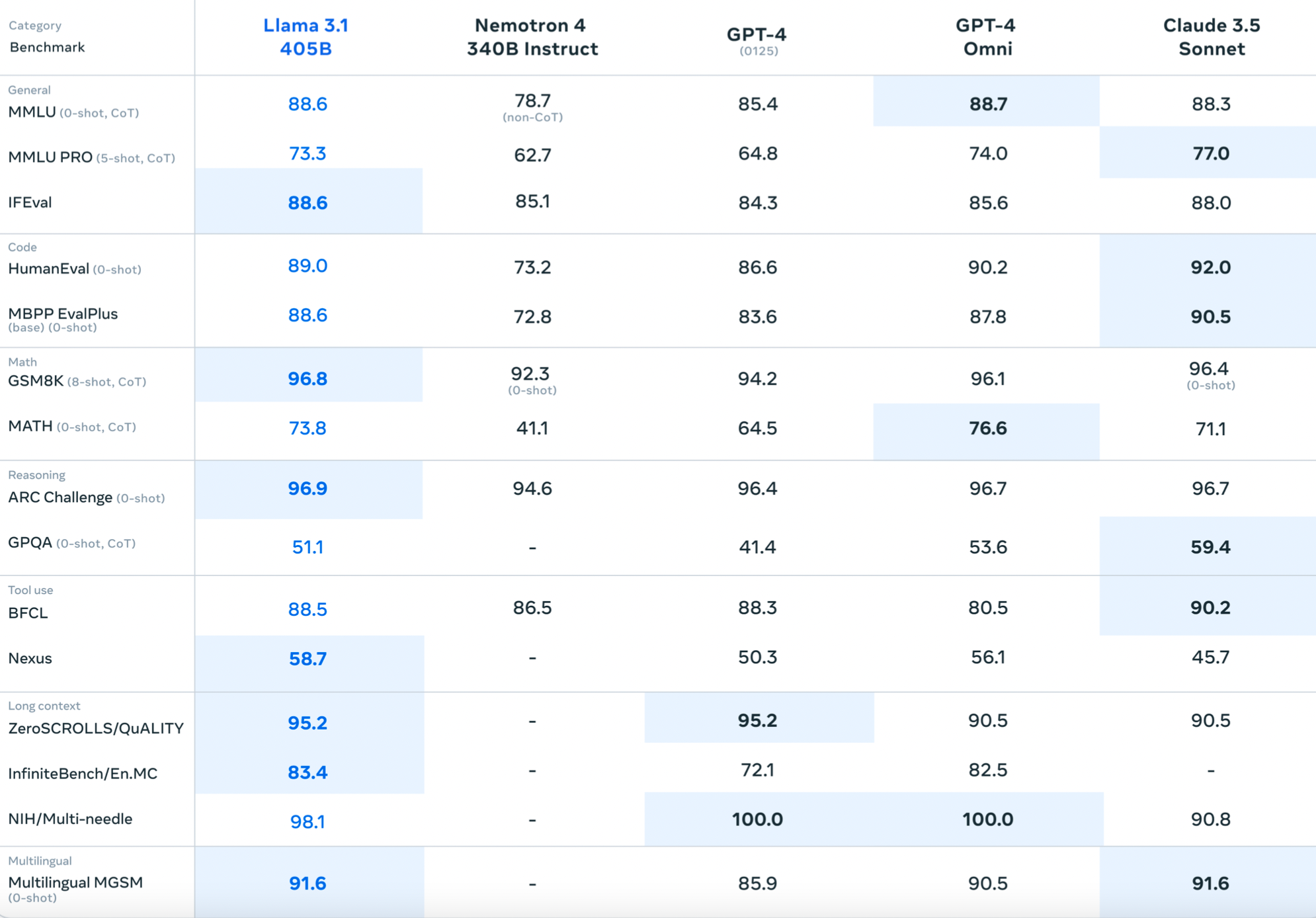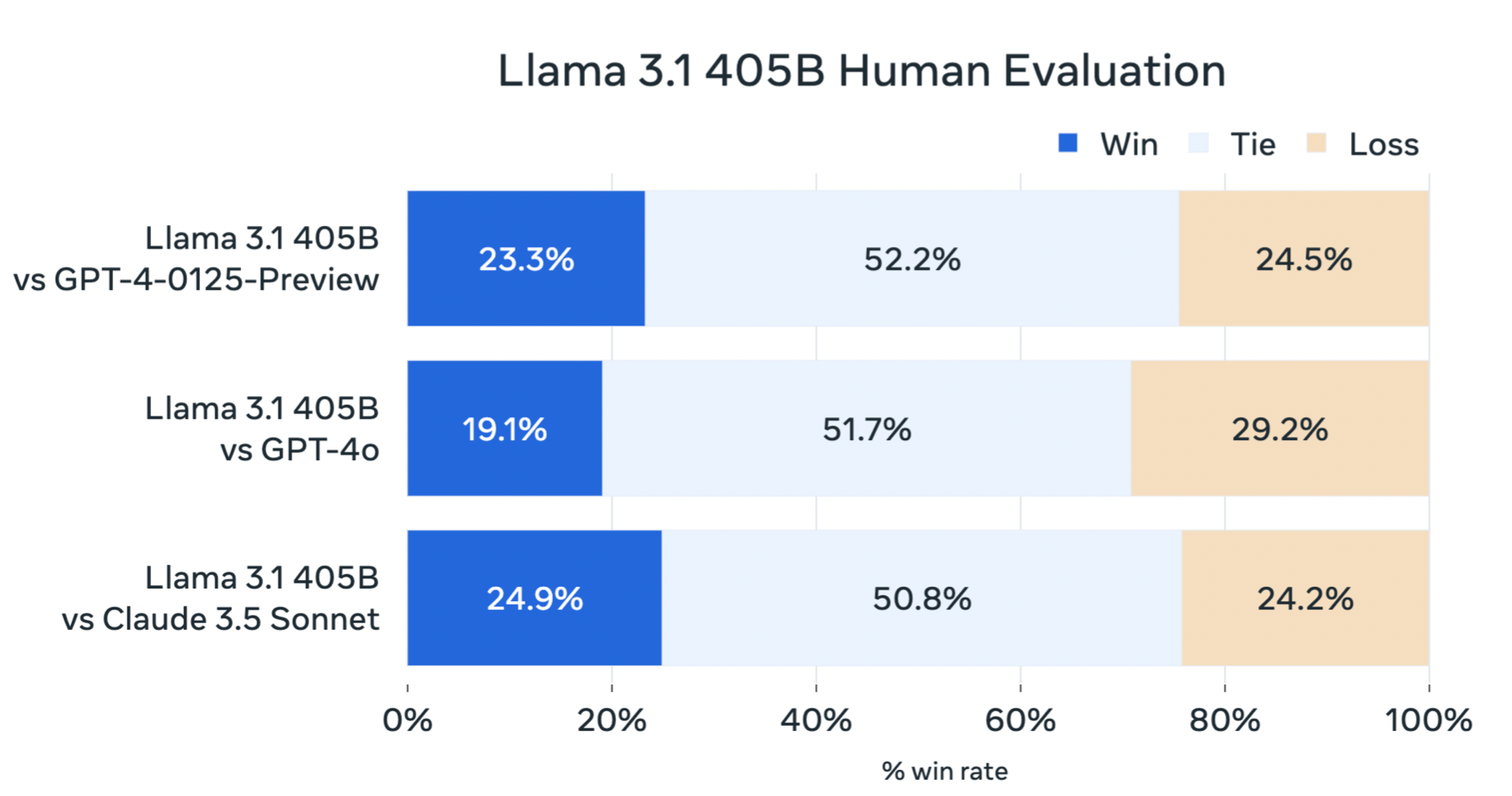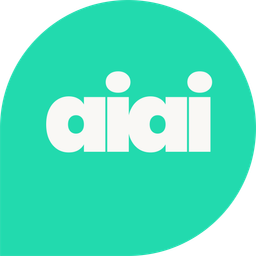Meta has taken a bold step forward in open-source large language models (LLMs) with the release of Llama 3.1. This 405B model update is said to rival the “top AI models when it comes to state-of-the-art capabilities in general knowledge, steerability, math, tool use, and multilingual translation.”
Llama 3.1 is a powerful tool that helps developers explore new ideas in AI research. Its improved knowledge, flexibility, and ability to handle multiple languages make it ideal for this purpose.
Want to learn more?
Keep reading for a deeper dive into Llama 3.1, its features, and how developers can use it to build advanced models. 👇🏼
Table of contents:
- What is Llama 3.1?
- Llama 3.1 405MB capabilities
- How developers can build with it
- Why developers should use Open Source AI
- FAQs
What is Llama 3.1?
Llama 3.1 is the first frontier-level open-source large language AI model. With 405B, it’s easiest the largest openly available model on the market, turning heads across the tech industry.
According to Meta, this version of the original model (Llama 1 and Llama 2) has 128K context length, improved reasoning, and coding capabilities. Meta has also upgraded both multilingual 8B and 70B models.
This open-source powerhouse empowers the community to explore new workflows, including synthetic data generation and large-scale model distillation.
In head-to-head tests, Llama 3.1 held its own against industry leaders like GPT-4, GPT-40, and Claude 3.5 Sonnet. It did particularly well in tasks involving math, reasoning, and coding.

To achieve this performance, Meta trained the model on 15 trillion tokens. This required significant optimization and a massive 16,000+ H100 GPU setup.

Llama 3.1 405MB capabilities
Llama 3.1 comes with a host of features and capabilities that appeal to developers, such as:
RAG & tool use – Meta states that you can use Llama system components to extend the model using ‘zero-shot tool use’ and build agentic behaviors with RAG.
Multi-lingual – Need to translate text from one language to another? With the right prompt, you can translate your text into any language. For example, you could use a prompt as simple as, "Translate this product description into Spanish" and Llama 3.1 will complete the task.
Complex reasoning – Assess the finer details and get help with complex reasoning tasks with help from Llama 3.1.
Coding assistants – You can use this AI tool to create codes to help you build intricate models or AI applications upon request.
Inference – You can choose between real-time inference or batch inference services. According to Meta, you can download “model weights to further optimize cost per token.”
Fine-tune – Adapt and customize your application as needed. You can also improve it with synthetic data and deploy it “on-prem or in the cloud.”

How developers can build with Llama 3.1 405B
Generative AI development involves more than just prompting models; using a model at the scale of 405B can be a challenge for developers.
While this model is incredibly powerful, its complexity and resource demands can be a barrier to entry. In response to community feedback, Meta has taken steps to make sure everyone can make the most of Llama 3.1.
To help developers fully leverage the 405B model, several key capabilities are being highlighted:
- Real-time and batch inference
- Supervised fine-tuning
- Application-specific model evaluation
- Continual pre-training
- Retrieval-Augmented Generation (RAG)
- Function calling
- Synthetic data generation
The Llama ecosystem is designed to support developers in maximizing these capabilities from day one. This means that you can immediately tap into the 405B model's advanced features and begin building your projects.
Mark Zuckerberg, CEO and co-founder of Meta, has said in his blog post:
“Today,, we’re taking the next steps towards open-source AI becoming the industry standard. We’re releasing Llama 3.1 405B, the first frontier-level open-source AI model, as well as new and improved Llama 3.1 70B and 8B models.
"In addition to having significantly better cost/performance relative to closed models, the fact that the 405B model is open will make it the best choice for fine-tuning and distilling smaller models.”

Why developers should use Open Source AI
Zuckerberg also went on to explain why he believes open source is the best development stack for developers, highlighting several key areas:
1. Training, fine-tuning, and distilling custom models
Different tasks require different model sizes. Smaller models are ideal for on-device tasks and classification tasks. On the other hand, larger models are better suited for more complex applications.
If your goal is to create advanced models, Zuckerberg claims Llama 3.1 is the best choice, stating that you can “continue training them with your own data and then distill them down to a model of your optimal size – without us or anyone else seeing your data.”
2. Maintaining control
If you're someone who would rather not rely on models you can’t run or manage yourself, you’re in luck.
Open-source solutions provide a flexible ecosystem of compatible toolchains, offering you the freedom to switch between them easily. This means you won’t have to rely on closed model providers who could change their models, alter terms of use, or even discontinue service at the drop of a hat.
3. Data security
If your company handles a lot of sensitive data, you need to work with a model that secures that data properly. There's a general mistrust of closed model providers when it comes to sensitive data.
However, open-source models can be run anywhere and are often considered more secure due to their transparent development process.
4. Efficiency and cost-effectiveness
According to Zuckerberg:
“Developers can run inference on Llama 3.1 405B on their own infra at roughly 50% the cost of using closed models like GPT-4o, for both user-facing and offline inference tasks.”
5. Invest in an ecosystem with longevity
Investing in the long-term standard for AI models is important. Many developers see open source advancing faster than closed models and want to build their systems on the architecture that offers the greatest long-term advantage.
In conclusion...
Meta's release of Llama 3.1 marks a significant leap forward for open-source AI. With its unmatched capabilities and commitment to responsible development, Llama empowers a wider range of developers to explore the potential of AI.
"Open source will ensure that more people around the world have access to the benefits and opportunities of AI, that power isn't concentrated in the hands of a small number of companies, and that the technology can be deployed more evenly and safely across society." - Mark Zuckerberg
With Llama 3.1 readily available and a robust ecosystem in place, the possibilities for innovation and positive societal impact are endless.
FAQs: Llama 3.1
What is Llama 3.1 405B?
Meta claims Llama 3.1 405B is the biggest publicly available language model in the world. It pushes the boundaries of AI and is perfect for big businesses and cutting-edge research.
Is Llama 3.1 free?
Llama 3.1 isn't exactly free, but it *is* accessible! You can use Llama 3.1 under a special agreement from Meta. This lets researchers, developers, and businesses use it for both research and making money.
Is Llama 3 better than GPT-4?
It depends! GPT-4 might be stronger for solving puzzles and math problems. But, Llama 3.1 is a close competitor and held its own when Meta carried out comparison tests with other big league names such as Chat-GPT and Claude.
What is the latest model of Llama?
Llama 3.1 is the most recent version currently available.
Want to learn more about Llama 3?
Join us at the Generative AI Summit in Berlin on September 12 to hear from Ricardo Silveira Cabral, Director, Generative AI Engineering at Meta.
Ricardo is doing a deep dive into Llama 3 models, and covering everything from how it all got started, to where it is today.
Grab your ticket today, and you'll...
- See real-world examples of how companies are leveraging AI to gain a competitive advantage.
- Network and collaborate with a diverse group of local and global AI specialists.
- Gain the knowledge and connections you need to get your AI projects up and running quickly.
- Become a part of a supportive community that will help you achieve your AI goals.



 Follow us on LinkedIn
Follow us on LinkedIn



